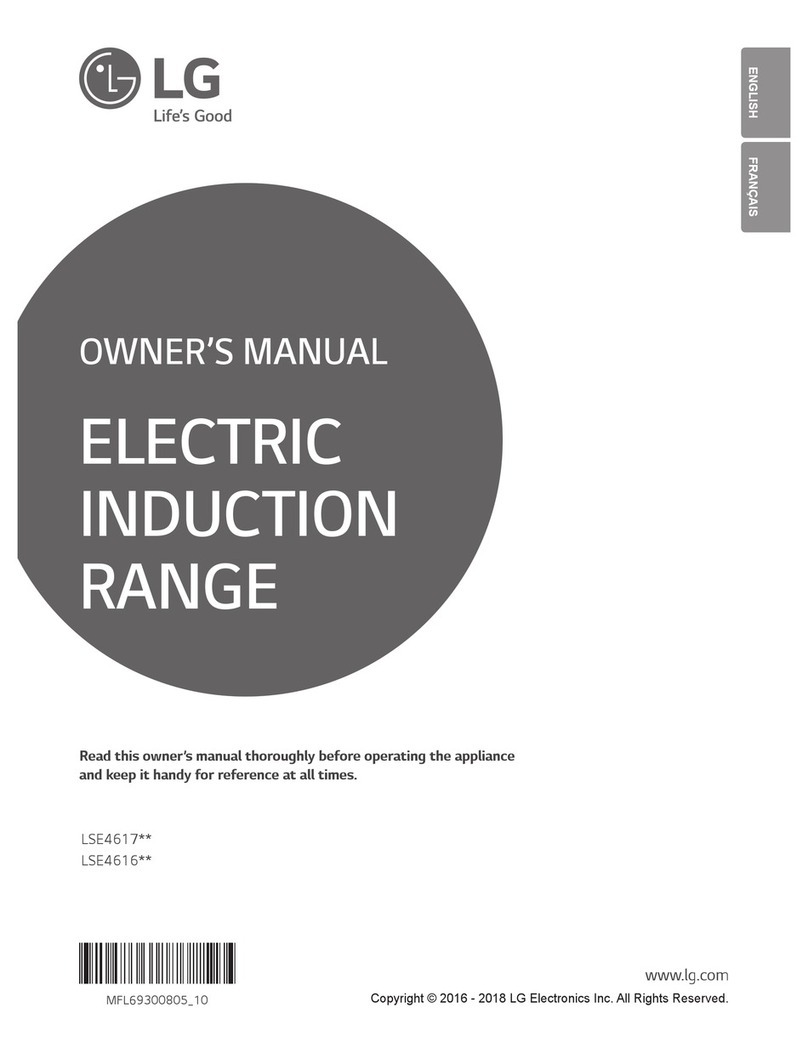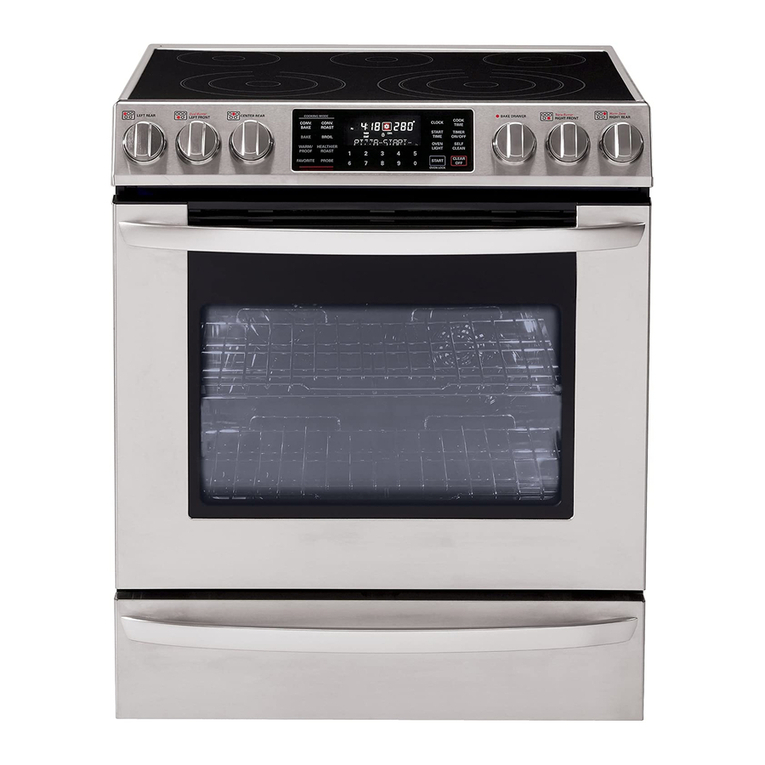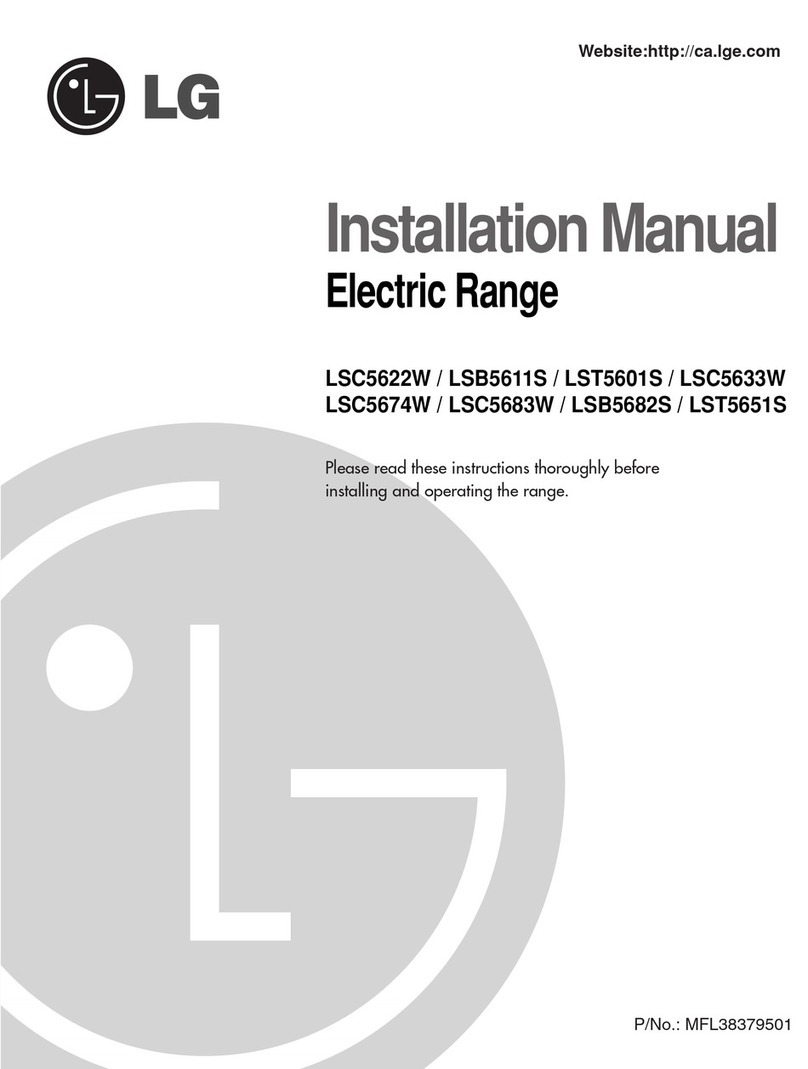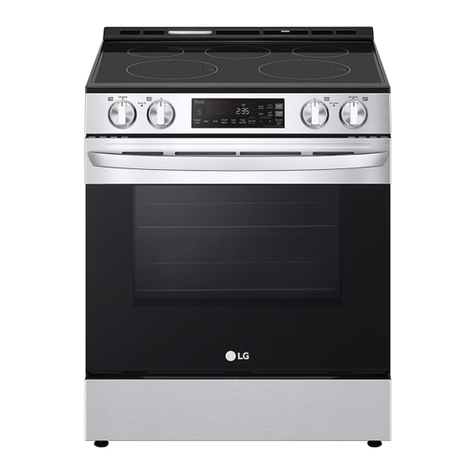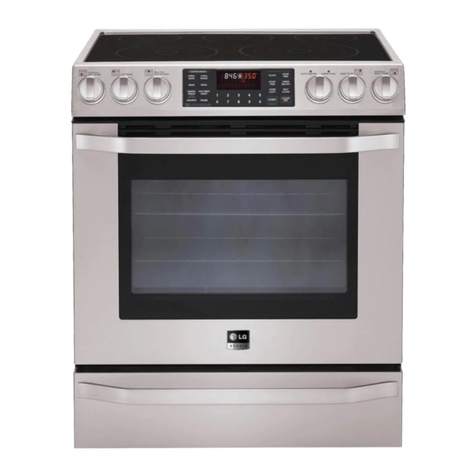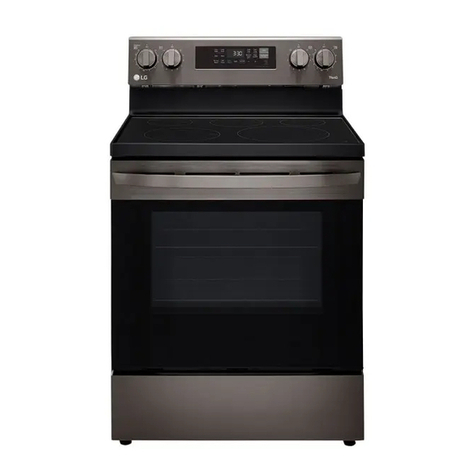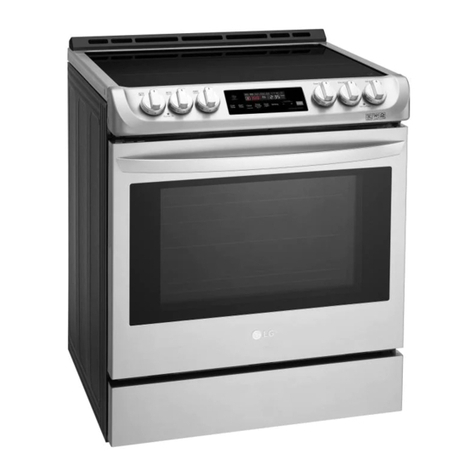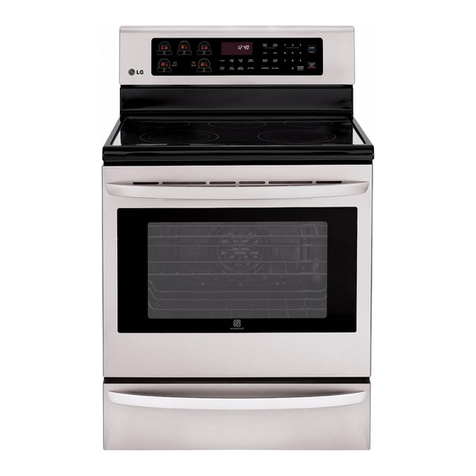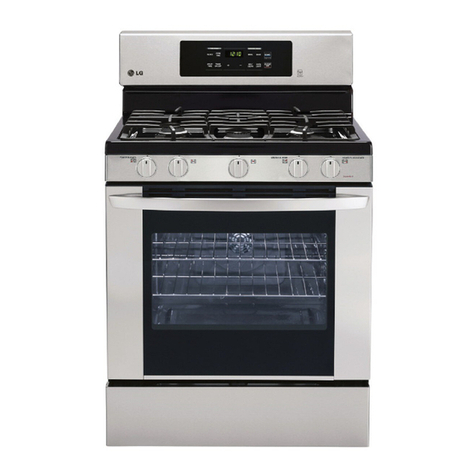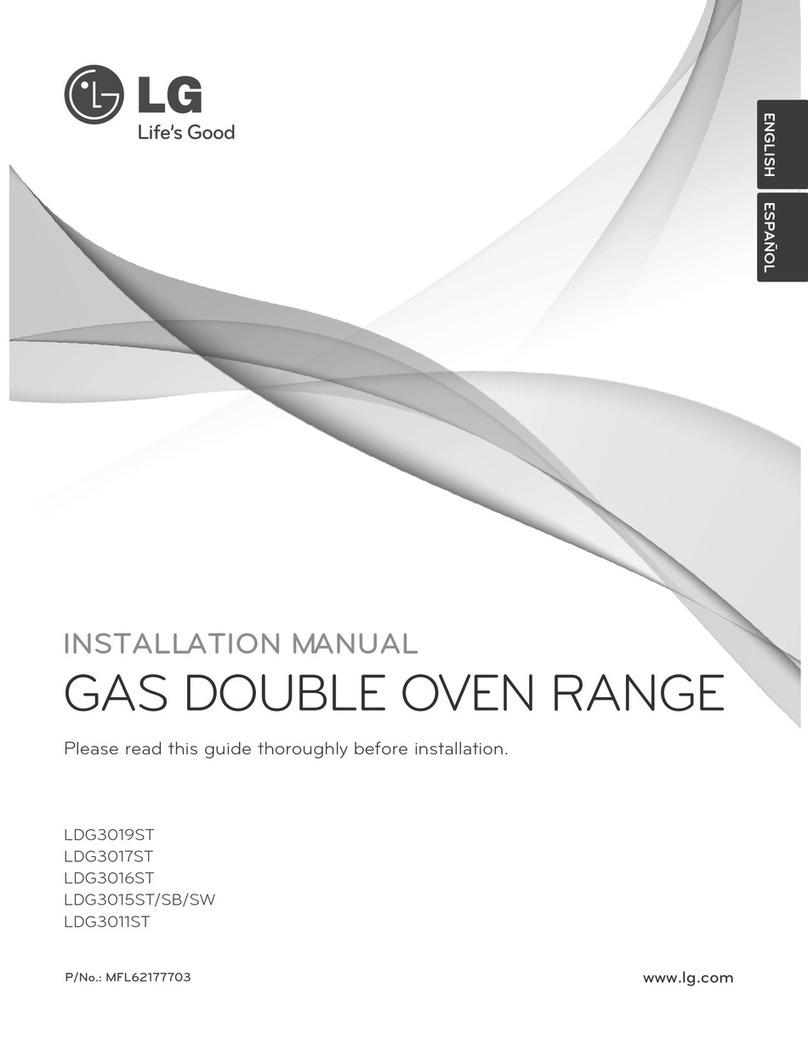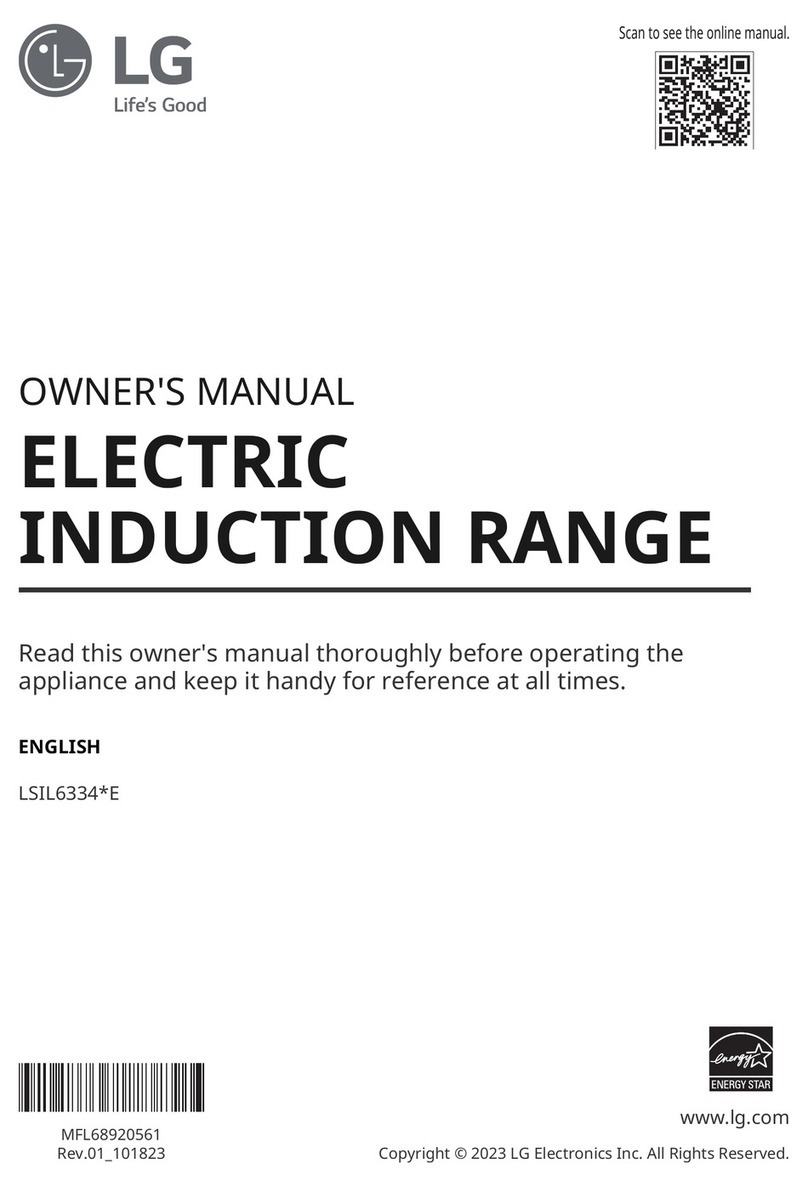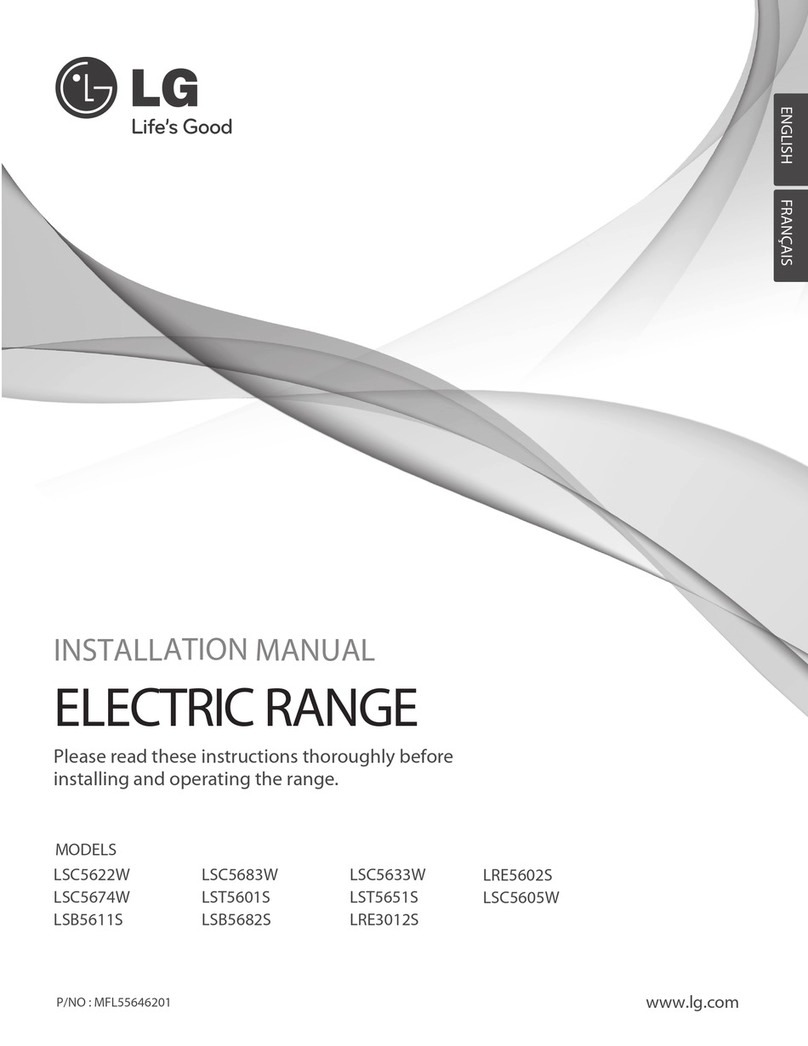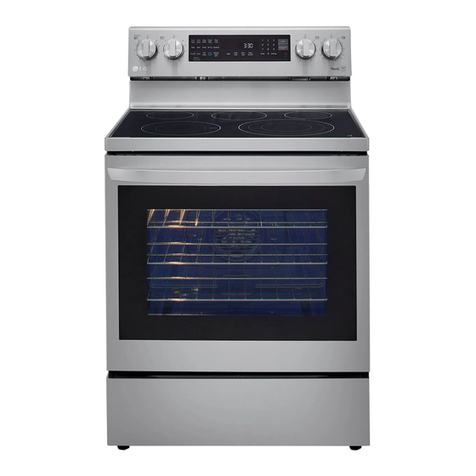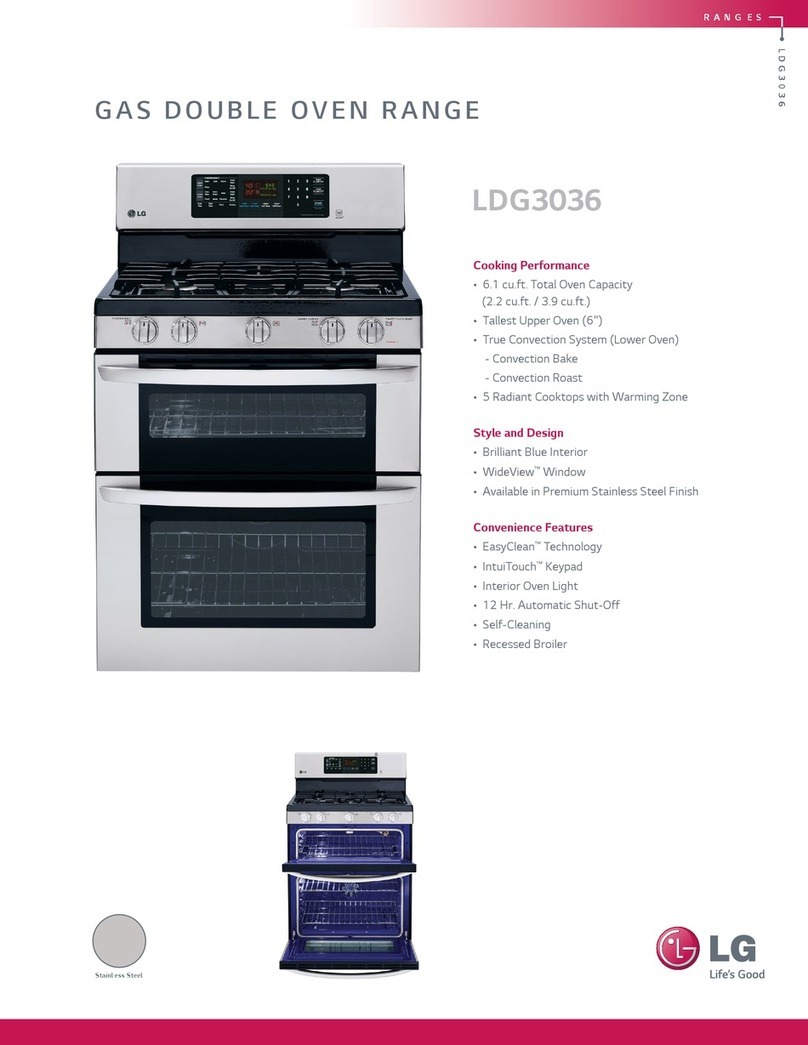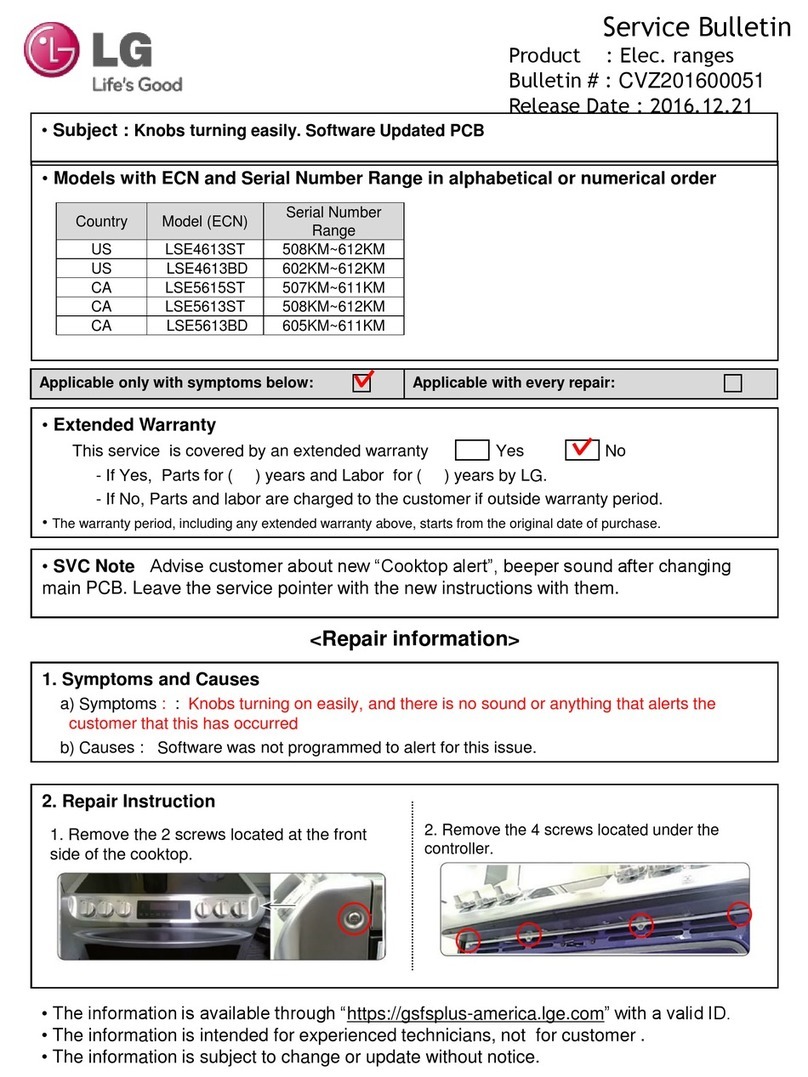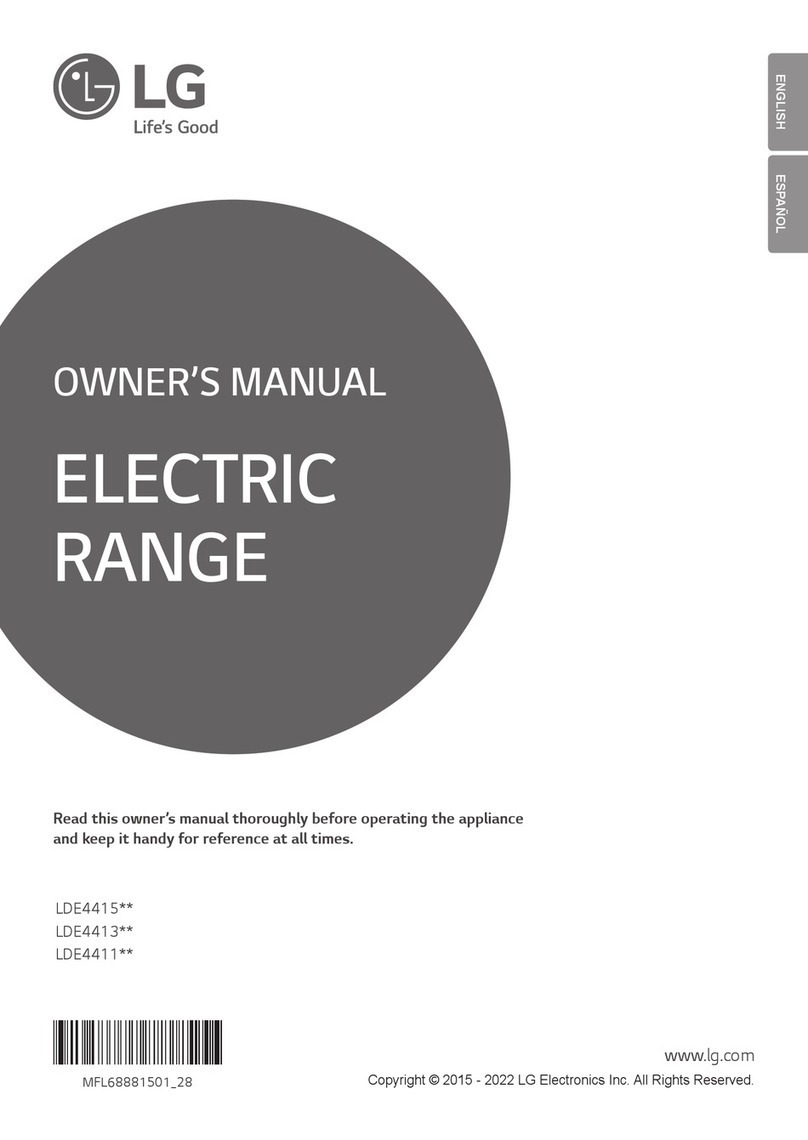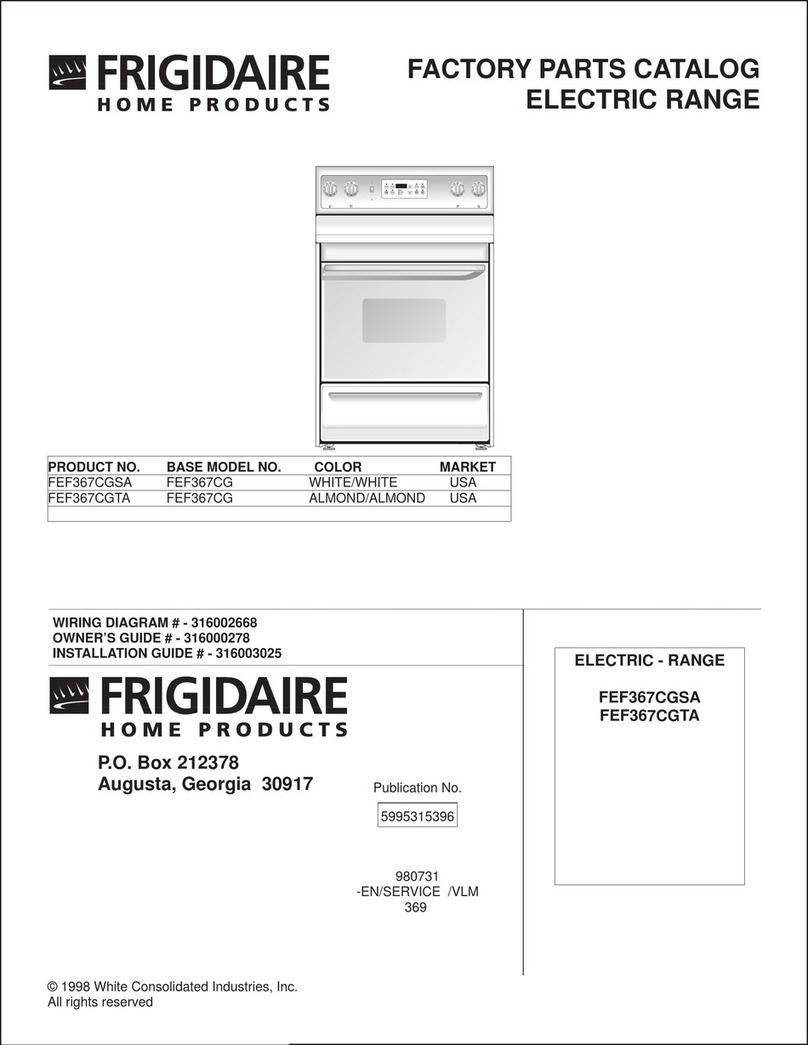40 MAINTENANCE
5Spray or pour the remaining 1 cup (8 oz or 250
ml) of water onto the bottom center of the oven
cavity. The indentation on the oven bottom
should be fully covered to submerge all soils.
Add water if necessary.
NOTE
Use the "mist" setting on the spray bottle for
better coverage. The entire 1¼ cup (10 oz or 300
ml) of water should be used for each oven cavity
cleaned. Do not spray water directly on the door.
Doing so will result in water dripping to the floor.
6Close the oven door.
Touch EasyClean®.
Touch Start.
CAUTION
•Some surfaces may be hot after the
EasyClean® cycle. Wear rubber gloves while
cleaning to prevent burns.
•During the EasyClean® cycle, the oven
becomes hot enough to cause burns. Wait
until the cycle is over before wiping the inside
surface of the oven. Failure to do so may result
in burns.
•Avoid leaning or resting on the oven door glass
while cleaning the oven cavity.
7A tone will sound at the end of the 10 minute
cycle. Touch Clear/Off to clear the display and
end the tone.
8After the cleaning cycle and during hand-
cleaning, enough water should remain on the
oven bottom to completely submerge all soils.
Add water if necessary. Place a towel on the
floor in front of the oven to capture any water
that may spill out during hand-cleaning. If you
are cleaning the upper oven on a double oven
range, it is also best to cover the holes in the top
of the lower oven door with a towel to capture
any water that may drip into the door during
hand cleaning.
9Clean the oven cavity immediately after the
EasyClean®cycle by scrubbing with a wet,
non-scratch scouring sponge or pad. (The
scouring side will not scratch the finish.) Some
water may spill into the bottom vents while
cleaning, but it will be captured
in a pan under the oven cavity
and will not hurt the burner.
NOTE
Do not use any steel scouring pads, abrasive
pads or cleaners as these materials can
permanently damage the oven surface.
10 Once the oven cavity is cleaned, wipe any
excess water with a clean dry towel. Replace
racks and any other accessories.
11 If some light soils remain, repeat the above
steps, making sure to thoroughly soak the
soiled areas.
•For Model : LDE4415 / LDE4413
If stubborn soils remain after multiple
EasyClean®cycles, run the Self Clean cycle.
Be sure that the oven cavity is empty of oven
racks and other accessories, and that the oven
cavity surface is dry before running the Self
Clean cycle. Consult the Self Clean section of
your owner’s manual for further details.
NOTE
•If you forget to saturate the inside of the oven
with water before starting EasyClean®, touch
Clear/Off to end the cycle. Wait for the range
to cool to room temperature and then spray
or pour water into the oven and start another
EasyClean®cycle.
•The cavity gasket may be wet when the
EasyClean®cycle finishes. This is normal. Do
not clean the gasket.
•If mineral deposits remain on the oven bottom
after cleaning, use a cloth or sponge soaked in
vinegar to remove them.
•It is normal for the fan to operate during the
EasyClean®cycle.






